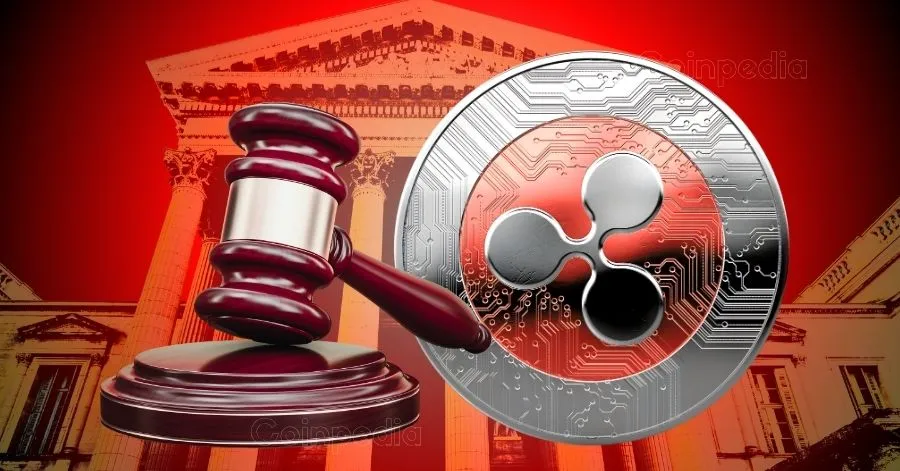The Ripple versus U.S. Securities and Exchange Commission (SEC) legal battle has been a defining moment for the cryptocurrency industry, particularly in the United States. The recent developments in this case—Ripple’s decision to drop its cross-appeal and the SEC’s anticipated withdrawal of its appeal—have far-reaching implications for Ripple Labs, the XRP token, and the broader regulatory landscape of digital assets. This report explores the background of the lawsuit, the strategic decisions made by both parties, and the potential consequences for the crypto market and regulatory frameworks.
Background of the Ripple vs. SEC Lawsuit
The legal dispute between Ripple Labs and the SEC began several years ago, focusing on whether XRP, Ripple’s native digital token, should be classified as a security under U.S. law. The SEC argued that Ripple’s sale of XRP constituted an unregistered securities offering, a claim that carried significant regulatory and financial consequences. Ripple, however, maintained that XRP was a currency rather than a security, defending its position to protect investor interests and the broader crypto market.
This prolonged legal battle has had a profound impact on XRP’s market performance, creating uncertainty and volatility. The case has also influenced how other cryptocurrencies are perceived by regulators, investors, and exchanges, making it a critical test case for the future of digital asset regulation in the U.S.
Ripple’s Drop of Cross-Appeal and SEC’s Likely Withdrawal
In March 2025, Ripple announced its decision to drop its cross-appeal against the SEC, a move that was soon followed by indications that the SEC would also withdraw its appeal. This mutual decision effectively ends a four-year legal contest that has been closely watched by the crypto community.
Ripple’s cross-appeal was initially intended to challenge certain aspects of the court’s ruling that imposed restrictions on XRP’s usage and sales. By dropping this appeal, Ripple signaled a strategic shift toward resolving the dispute and focusing on future growth. The decision also included a financial settlement, where Ripple agreed to pay $50 million out of a previously imposed $125 million penalty. The remaining $75 million would be returned to Ripple, effectively resolving the financial liabilities related to the case.
The SEC’s anticipated withdrawal of its appeal further underscores a willingness to reach a resolution, potentially reflecting a broader recognition within regulatory circles that existing securities laws may not be fully equipped to address the unique nature of digital assets like XRP.
Implications for XRP and Its Market Value
The conclusion of this legal battle is expected to have a positive impact on XRP’s market value. The prolonged uncertainty surrounding XRP’s regulatory status has constrained its adoption and liquidity, particularly among institutional investors who are cautious about regulatory risks. With the legal dispute now resolved, exchanges can resume normal trading of XRP without fear of regulatory repercussions.
The market’s response to these developments has been optimistic, with XRP’s price rallying in anticipation of increased adoption and liquidity. The ability to settle transactions and raise capital more freely positions XRP to reclaim its status as one of the world’s leading cryptocurrencies. This resolution is likely to attract more institutional investors, further boosting XRP’s market value and liquidity.
Broader Impact on Cryptocurrency Regulation and Industry Confidence
The settlement between Ripple and the SEC may signal a broader shift in how U.S. regulatory authorities approach cryptocurrencies. The SEC’s willingness to drop its appeal and settle terms with Ripple suggests a growing recognition that existing securities laws may not be fully equipped to address the unique nature of digital assets. This could pave the way for more nuanced regulatory frameworks that balance investor protections with innovation and market growth.
The conclusion of this long-running dispute could catalyze more informed and balanced regulatory approaches, enhancing confidence among crypto businesses and investors. This case sets a precedent that may influence future regulatory actions and the classification of various digital assets, potentially leading to clearer rules and greater market stability.
Ripple’s Strategic Position Post-Lawsuit
With the legal overhangs removed, Ripple is well-positioned to strengthen its market strategy. The company can now focus on expanding partnerships and deepening its foothold in cross-border payment solutions, an area where Ripple has already established a strong presence. The ruling preserves Ripple’s ability to operate in the U.S. and potentially tap into the growing demand for blockchain-based financial services.
By resolving this dispute, Ripple also sends a message to other crypto enterprises about the possibility of navigating regulatory challenges through constructive engagement and legal resolution. This could encourage other companies to adopt similar strategies, fostering a more collaborative approach to regulatory compliance and innovation.
Conclusion: A New Chapter for Ripple and Crypto Regulation
The termination of the Ripple vs. SEC lawsuit marks the end of a significant chapter that has had far-reaching implications for the crypto industry. Ripple’s decision to drop its cross-appeal and the SEC’s anticipated dismissal of its appeal bring closure to one of the most closely watched legal disputes in the crypto world. This resolution not only boosts XRP’s prospects but also signals a potentially transformative moment for the U.S. regulatory landscape’s approach to cryptocurrencies.
By moving past litigation, Ripple and the SEC illustrate a pragmatic path forward—one that may foster clearer rules, greater market stability, and renewed innovation in the digital asset sector. For investors, developers, and policymakers alike, this turning point represents an opportunity to rethink how emerging technologies and regulatory frameworks can co-evolve to shape the future of finance. The resolution of this case sets a precedent that could influence future regulatory actions, encouraging a more balanced approach to digital asset regulation that supports both innovation and investor protection.












